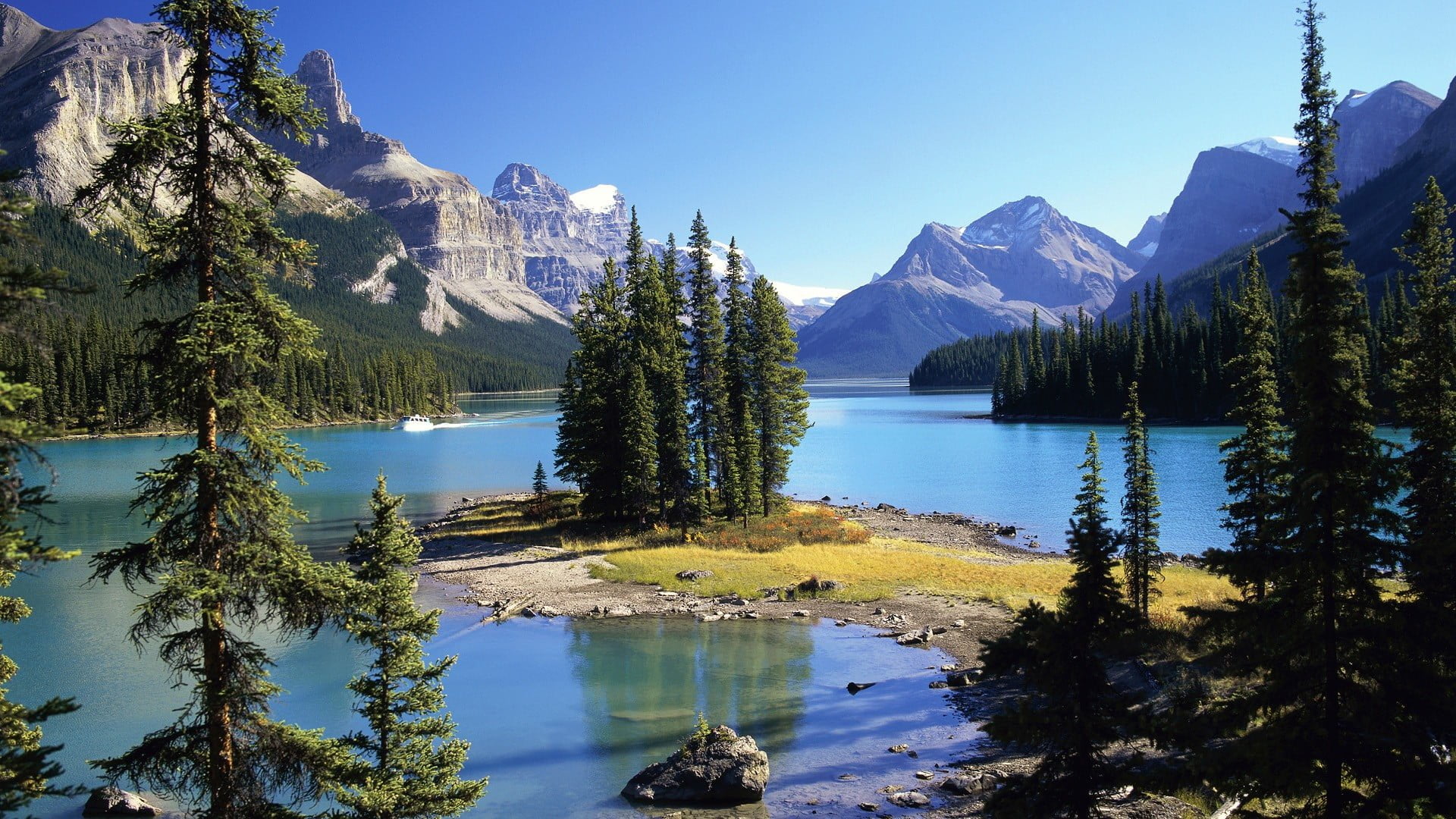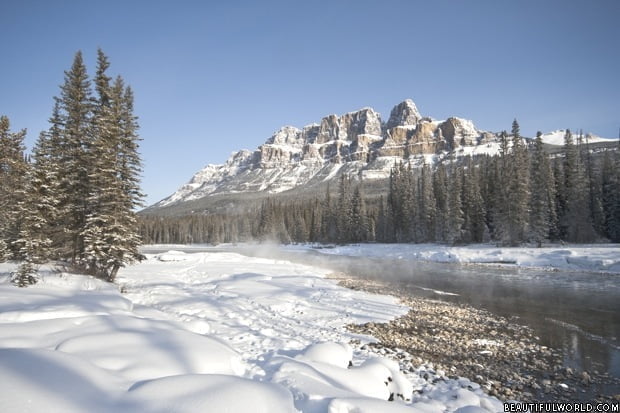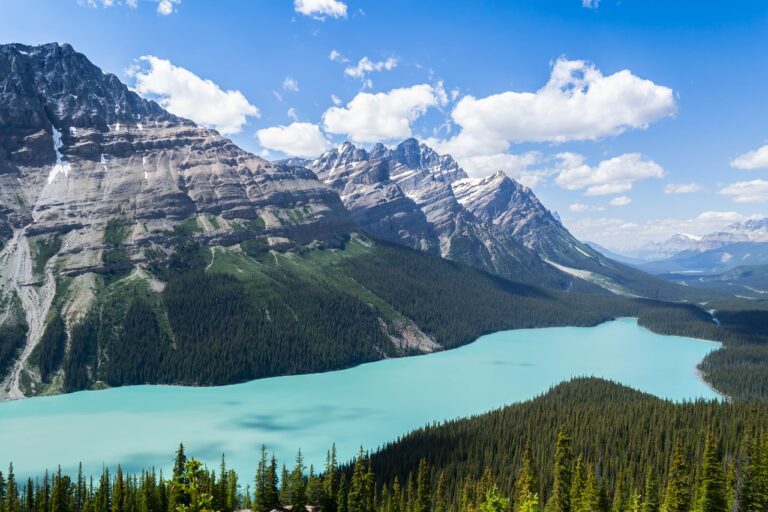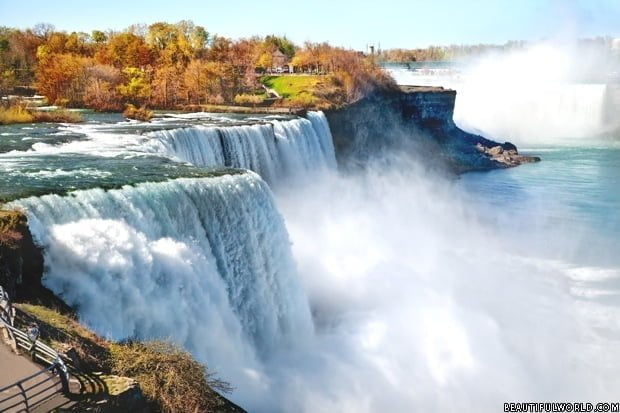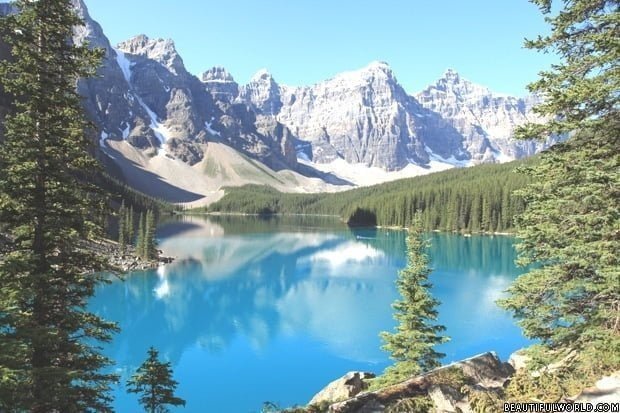Situated along the eastern side of the Canadian Rockies, Jasper National Park is the largest National Park in the Canadian Rockies and one which many people regard as the wildest and most exciting. It covers an area of 10,878 square kilometres and was first established and given protected status in 1907 at which time it was known as the Jasper Forest Park. The 1930 National Parks Act confirmed its importance and it then became known as Jasper National Park.
It was named after Jasper Hawes who operated a trading post in the area. It is one of the few places named after a first name rather than surname but this part of Canada has a fascinating past often reflected in the names given to places and geographical features. The trade in furs and hides was a major reason for the development of communication routes hence the naming of Leather Pass. A famous Iroquois guide went on to become a major fur trader and he was known as Tete Jaune or Yellow Head due to his unusual fair hair. These names can be found throughout the region.
Jasper National Park is the most northerly of a group of National Parks and to the south it borders the Banff National Park, the two parks being connected by Highway 93, known as the Icefields Parkway. Centred on the town of Jasper, this is a great area for lovers of the great outdoors and the town offers a full range of facilities and choice of accommodation but many visitors enjoy really getting back to nature choosing to stay in rather more primitive surroundings within the park.
Things to do in Jasper National Park
As is to be expected in such a scenically beautiful mountainous area, outdoor activities are the number one holiday choice and when snow is on the ground there are some good skiing opportunities, notably at Marmot Basin. For those who enjoy adventure on water, rafting and kayaking are available and with over 1,200 kilometres of trails, this is a hikers’ paradise. Mountain biking is a popular alternative and for the less energetic there are many great scenic drives. The scenery is simply breathtaking and this has resulted in the area, along with other parks in the Canadian Rockies, being designated as a UNESCO World Heritage Site in 1984 on account of its mountain landscapes, lakes, waterfalls, limestone caves and fossils.

With so much to see, every step presents a different viewpoint and it is difficult to offer any recommendations as to which places to visit but the massive Columbia Icefield is unavoidable and surprisingly accessible. The lakes provide the opportunity to see the snowcapped peaks reflected in their mirror-like waters and Pyramid Lake, Maligne Lake and Medicine Lake are all popular. Mount Edith Cavell and Pyramid Mountain are unforgettable and for lovers of waterfalls, there are many to choose from including Athabasca Falls, Sunwapta Falls, Tangle Creek Falls, Geraldine Falls and Maligne Canyon Falls.

For those with good heads for heights, the Jasper Skytram promises to offer the ultimate viewing experience. This superb cable-car was built in 1964 and is the highest and longest of its type in Canada. The fully enclosed cars can be boarded just 8 kilometres from the town of Jasper and they rise up Whistlers Mountain where passengers can disembark at an altitude of 2,262 metres above sea level. In addition to enjoying some of the world’s finest mountain scenery, there are also wonderful opportunities to view the region’s wildlife. There are many species of grazing animals including moose, elk, caribou, mule deer, white-tailed deer and bighorn sheep along with predator species such as the black bear, timber wolf, cougar and wolverine. The area is also home to many species of birds including golden eagles, bald eagles, great-horned owls, grouse, ptarmigans and geese.
Jasper National Park Map

Access to Jasper National Park is fairly straightforward but due to its popularity traffic can be heavy at times so some delays may be anticipated especially on public holidays. The approach from the west is along Highway 16 which is known as the Yellowhead Highway and it follows one of the old fur trade routes. It leads to the town of Jasper and then continues to the north and east towards Edmonton. The southern approach is via Highway 93, known as the Icefield Parkway. This is a 230 kilometre highway which, as its name implies, runs alongside the huge icefield. This road follows the course of the continental divide. During periods of bad weather, for which Canada is noted, the roads may become difficult or impassible and four-wheel drive vehicles may become almost obligatory. The use of snow chains is also sometimes required. Maps of Jasper National Park are widely available and these give details of trails and places of interest but the Park authorities will also advise which areas are closed or out of bounds to visitors during winter.

Jasper National Park Weather
This is an area where winters are long and summers short but Jasper National Park is certainly a year-round attraction. Winter snows are of course guaranteed but the winter weather is possibly not as extreme as some visitors may expect. Spring normally begins around mid-April as winter snows thaw at the lower altitudes in the valley bottoms but it is usually around a month later that higher altitudes begin to warm. July is the warmest month with daily maximum temperatures averaging a pleasant 22 degrees Celsius. Autumn arrives in September and October with January being the coldest month with average maximums of minus 9 degrees Celsius. There are localised micro-climates where the weather is affected by factors such as latitude, altitude, winds and the proximity of glaciers. In general, an increase in altitude of 300 metres results in a temperature drop of around 1.7 degrees Celsius. Winds from the south-west tend to have a warming affect but may increase the probability of snowfall.
Jasper National Park Camping
There can be few better ways of enjoying this park than camping and there are currently over 1,700 campsites. There are sites suitable for everything from a single bivvy to a large mobile home but for many of the better equipped sites pre-booking is required and this can be done simply online or by phone. Many of the smaller sites operate on a first come first served basis and, with checkout being at 11 am, this is the best time to arrive to claim a place. Facilities vary with some sites offering electric hook-ups and showers etc. and some others being extremely basic. A useful feature worth looking for is the provision of a log cook-house where meals can be prepared regardless of weather conditions.

Fires are normally allowed but a suitable fire permit is required. This usually includes a suitable supply of wood fuel. Fires must be properly controlled and are only allowed in the designated fire-pits. The rules applicable to camping include being quiet at night and ensuring that all foods are stored in bear-proof containers! A recent addition to the park is the slightly upmarket camping option of luxury tents. These are know as “oTENTik” tents and they offer the relative luxury of timber floors, bunk beds and all the comforts of home (well almost!). The numbers of oTENTiks is fairly small and pre-booking is essential.
Jasper National Park Hikes
This is superb hiking country and with over 1,000 kilometres of designated trails there is a route suitable for everyone. Perhaps the most important thing is to match the chosen route to one’s own ability. The different trails are given different difficulty ratings and these, coupled to information regarding the trail length and expected time for completion means that everyone should know what to expect. Some easy trails can be completed in 30 minutes but others may involve an all-day hike. Some typical trails, taken at random, are as follows: Lac Beauvert – Easy, 1-2 hours, 3.5 kilometres, no altitude gain. Old Ford Point Loop – Moderate, 1-2 hours, 3.5 kilometres, 70 metre altitude gain. Pyramid Lake Loop – Moderate, 5.8 kilometres, 217 metre altitude gain. Important things to remember are that weather can change suddenly with snow and icy conditions being possible even during summer so suitable clothing must be worn along with suitable supplies of food and water.
Jasper National Park Glacier Skywalk
A recent addition to the many different ways to view the wonders of Jasper National Park is the Glacier Skywalk. This incredible feat of engineering includes a pathway with a cantilevered viewing platform which loops out from the mountain side and is constructed with a glass floor allowing an unobstructed view down to the floor of the Sunwapta Valley 280 metres below. Those suffering from vertigo may wish to give this one a miss! It is accessed from the Icefields Parkway.

The Best Time to Visit Jasper National Park
This is a place to enjoy the natural beauty of one of the world’s greatest mountain landscapes and it must be said that each season has its own unique character. The park is at its most accessible during summer but possibly at its most beautiful in autumn. The snows provide a magical change which few could resist. A visit to Jasper National Park promises to be an amazing experience at any time of the year. Those preferring a little more luxury can rely on a warm welcome in Jasper town and perhaps the ultimate in mountain relaxation can be found by visiting the Miette Hot Springs where geothermally heated water is pumped into pools and maintained at a balmy 40 degrees Celsius. There can surely be no pools in the world with views like this.


